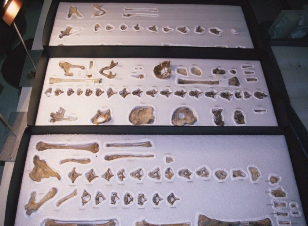
Figure 18: Photograph showing the outlay (arranged into separate skeletons) of approximately 70% of the skeletal material recovered. From top to bottom: Dick, Tom and Harry.
All of the skeletal material has been catalogued and entered on the Queensland Museum's Pandora artefact database. Firstly, the bones needed to be recognised as being of human or animal origin. Secondly, each human bone had to be correctly identified, and the results recorded. This was not always possible owing to significant degradation or fragmentation of some material. Thirdly, as the Pandora skeletal collection clearly represented more than one individual, an attempt was made to place each bone with the correct individual.

Figure 18: Photograph showing the outlay (arranged into separate skeletons) of approximately 70% of the skeletal material recovered. From top to bottom: Dick, Tom and Harry.
The Queensland Museum allocated each bone or fragment with a unique call number of at least four digits, commencing with the letters 'MA' (Maritime Archaeology). The Pandora skeletal material had no coherent order in MA catalogue numbers. For the purpose of this study, a new catalogue system incorporating anatomical characteristics of each bone was created. Each bone was ordered anatomically into the following regions of the skeleton:
The skeletal catalogue also includes information in the following areas:
When a collection of skeletal remains is located, one of the primary concerns of the forensic osteologist is to identify, sort and catalogue the material on an anatomical basis. It is of great importance in any forensic investigation first to ascertain the number of individuals represented - factors such as age, size, sex and bilateral traits can be of primary importance. Matching articular surfaces can provide clues regarding individual association. Taphonomic features such as surface staining or weathering can also be of use but are of secondary importance and should only be viewed as lesser indicators of identity. Occasionally, animal remains can also be present and it is important to identify and exclude them as such. Sorting of the Pandora skeletal remains presents a challenge not only from the point of view that there is more than one individual represented, but also because much of the material is fragmented or missing. Some of the skeletal remains are in a superb state of preservation, while others demonstrate a high degree of fragmentation and erosion. In some instances specific anatomical identification and allocation to an individual is considered unreliable or impossible.
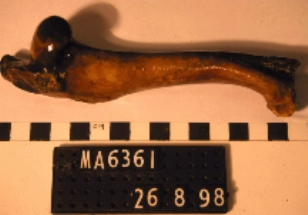
Figure 19: Non-human femur recovered from the wreck
The minimum number of individuals represented by the remains is the first factor to be determined, enabling all of the skeletal material to be accounted for. For example, if a fragment of right humeral head is found together with a fragment of right distal humerus, two simple scenarios exist:
1. They originate from the same bone, thus being consistent with one individual.
2. They are from different bones originating from two individuals.
Therefore, in this simple example the minimum number of individuals present is one, whereas the maximum number would be two. While the minimum number of individuals can be relatively simple to determine, the Pandora collection consists of over 200 bones, many of which are fragmented, and determination of the maximum number of individuals becomes next to impossible. In reality, the maximum number of individuals could be stated as 35, since this is the number of lives known to be lost when the ship sank.
Once non-human elements were excluded, initial examination of the material revealed a total of six scapulae, which could be reliably sorted into pairs of three on the basis of anatomical similarities. Additionally, there were also three complete human mandibles and three separate articulating pairs of C1 and C2. This clearly indicates the minimum number of individuals present was three.
Many techniques were used to sort the Pandora skeletal collection. A brief description of some of the methods used to identify and sort the skeletal material are explained below.
In total, there were 49 vertebrae in the Pandora collection. Many could be sorted by direct articulation, with corresponding superior and inferior vertebrae. For example, Tom retained a complete spinal segment containing C1 through to T9. Through careful observation of the superior and inferior articulating processes, it was seen that two of the vertebrae clearly articulated in vivo. Other vertebrae of similar position in the vertebral column did not articulate. The size and morphology of the vertebral canal was also used to group an unknown vertebra into a specific vertebral column. Regions where the lumbar plexus widens the vertebral canal were also useful. For the vertebral column belonging to Dick, pathological features in parts of the vertebral column were used as a reliable means to sort unknown vertebrae.
The complete cranium belonging to Harry clearly articulated with C1 from one of the vertebral columns, and no other. One of the mandibles made an occlusal match to this cranium, although the temporomandibular joints did not precisely fit.
Teeth retained in the right maxillary fragment belonging to Tom made an occlusal match to one of the mandibles. The remaining cranial fragments from this individual were broken apart during excavation and their original location was recorded; they were known to fit together originally.
The upper limb bones were sorted purely on anatomical features. Where available, the semilunar notch on a proximal ulna could be shown to articulate functionally with the capitulum and trochlea of a distal humerus, and no other. Similar articulation characteristics were seen for the head of a matching radius. In some cases, the size of the upper limb bones allowed for immediate discrimination between individuals. Humerus of left and right upper limbs were paired according to clear similarities in anatomical characteristics, such as total length and bicondylar width.
Scapulae were easily paired and assigned to a humerus, if present, according to the morphology of the head of the humerus and the glenoid cavity of the scapulae. There was little confusion as to which scapula matched which humerus.
Tom's skeletal remains were consistently different from those of Dick and Harry. This skeleton demonstrated prominent muscular markings on all the long limb bones, and even the metacarpals. These features proved helpful in allocating bones.
Age was also used to discriminate between the remains of Tom and the other two skeletons. Tom was a younger individual, and unfused epiphyses on several bones enabled the reliable allocation of bones to his skeleton. These features, however, did not help in sorting bones between Dick and Harry, since they were of similar ages.
Some bones belonging to an individual showed consistent staining, not found on the other skeletons. Although helpful, this was not a reliable indicator. Where bones of the hand were found, some clearly did not match others and, once identified, these bones could be quickly sorted to an individual. Some of the phalanges, however, could not be reliably identified or sorted. Fragmented bones, such as the pelvic remains belonging to Tom, were shown to articulate along epiphysial fracture lines.
Identification of the fibula shafts (which were missing their proximal and distal ends) was done using the nutrient foramen. The nutrient foramen of the fibula is known to open proximally on the posteromedial side of the bone (White 1991).
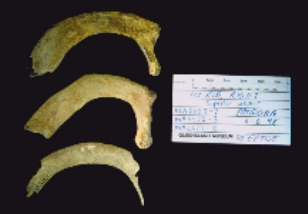
Figure 20: Photograph showing the first ribs belonging to each of the three individuals.
Some of the ribs demonstrated consistent anatomical characteristics which were used to sort reliably between individuals. The ribs in turn could occasionally be matched with the articular facets of corresponding vertebrae. On occasion X-ray analysis also provided clues regarding the allocation of an unknown bone to a particular individual.
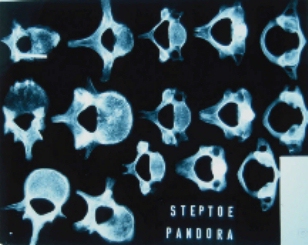
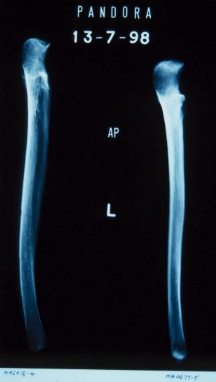
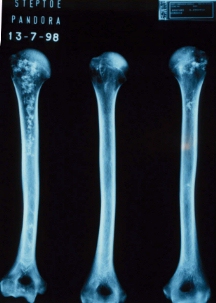
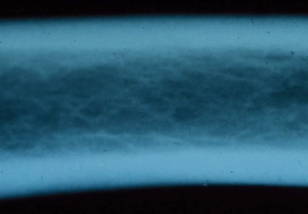
Figure 21: X-Ray taken of various vertebrae (l-top)
Figure 22: X-Ray of selected ulnae (r-top) [MA6418-4 and MA4677-5].
Figure 23: X-Ray of selected humerus (l-bottom)
Figure 24: X-Ray showing compact bone comprising the mid-shaft of a humerus (r-bottom)
Once a significant proportion of the remains had been reliably sorted, the process of elimination was used to allocate many of the remaining bones to an individual. To back up morphological and logical methods used to allocate bones to an individual, a computerised technique was developed and used. This is outlined below.
The vast majority of the skeletal material could be reliably sorted into individuals by anatomical characteristics alone. There were, however some bones which could not be identified to any of the three individuals.
Where possible, the skeletal catalogue includes the x, y and z coordinates, giving the position of nearly every bone and bone fragment recovered from the wreck. These coordinates give the position where each bone was recovered from the wreck. It was found that the majority of the remains belonging to each individual (Tom, Dick and Harry), were separated from one another such that each individual occupied a particular area of the wreck. By analysing this coordinate data, we were able to make suggestions as to the probability of a bone belonging to a particular individual. These suggestions were based on the known position of the bone relative to the most 'concentrated' area of a known individual.
Using this technique, nearly every unsorted bone could be attributed to an individual with a reasonable degree of certainty. This method also confirmed the validity of much of the originally sorted remains. Bones sorted using grid coordinate data are stated as such in the skeletal catalogue.
Forensic osteologists use skeletal charts as standard visual representations of human skeletal remains. The charts provided here indicate the material (in red) recovered from Tom, Dick and Harry. The skeletal material recovered in 1986 (Dick) can be seen in blue. These charts show only material which is known to belong to a particular individual. Specific detail of other bones can be found in the skeletal catalogue.
The location where each bone was excavated becomes important in the interpretation and analysis of the material. This outline of the ship's hull was reconstructed on computer using reference points taken from a photomosaic, and is not completely symmetrical as might be expected, because the hull is lying at a slight angle to the ocean floor (Gesner 1991, 38). Excavation of the ship was carried out within a system of 250 grids. Each of these grids measured 2x2m, and allowed for the x, y and z coordinates of each artefact to be measured to the nearest centimetre, relative to the ship.

Figure 25: Model demonstrating some of the grids used to systematically excavate the wreck site.
There exists the possibility of discrepancy between the allocation of skeletal material belonging to Dick and the 1986 material studied by Wood and Hodgson (1996). Throughout this article, the 1986 material has been described as belonging to the skeleton remains of Dick. It is worth mentioning the remote possibility that this may not be the case, and the 1986 material could represent a separate individual. The possible reasons for this are as follows:
However, when considering the individual components of skeletal remains thought to belong to Dick (from recently recovered material and the 1986 material), it can be seen that there are no duplicated skeletal elements. Furthermore, the age, sex and stature conclusions drawn from recent studies on the remains closely match those performed by Wood and Hodgson (1996) on the 1986 material. Without studying the re-interred 1986 material, discrepancies discussed above cannot be further investigated. Summative evidence would strongly suggest that the recently recovered remains belonging to Dick have come from the same skeleton studied by Wood and Hodgson (1996).
In the absence of further evidence, this strongly suggests that all of the remains are correctly sorted. Further excavation of the wreck may uncover more skeletal material, thus confirming the total number of individuals.
© Internet Archaeology
URL: http://intarch.ac.uk/journal/issue11/4/24.html
Last updated: Thu Mar 28 2002